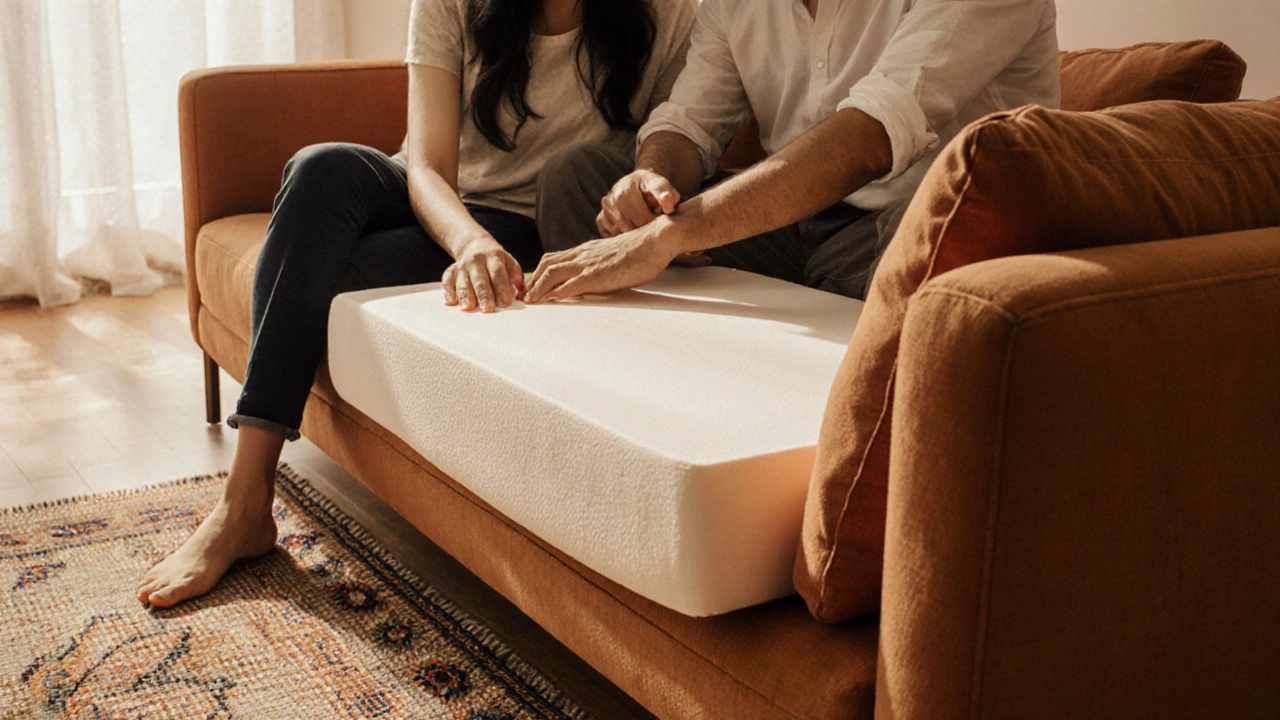Cushion Stuffing: What It Is and Why It Matters
When you sit on a sofa or lean against a pillow, the feeling you get comes from the stuffing inside. The right cushion fill makes a seat feel soft, supportive, and long‑lasting. The wrong one can get flat quickly or feel too hard, making you keep readjusting. Below you’ll learn the basics of cushion stuffing, how to match it to your needs, and where to find eco‑friendly options that fit an Indian‑made home.
Common Types of Cushion Fill
Polyester fiber – The most popular fill because it’s cheap, lightweight, and easy to clean. It holds its shape well but can feel a bit plasticky if low quality. Look for high‑density polyester if you want a firmer feel.
Foam blocks – Offer solid support and keep their shape for years. They’re great for seat cushions that need to stay firm, but they’re heavier than fiber and can be hard to move around.
Feather & down – Gives a plush, cloud‑like experience. Ideal for decorative pillows or lounge chairs where you want a soft, sink‑in feel. Feathers need regular fluffing and may trigger allergies for some people.
Eco‑friendly options – Recycled polyester (made from plastic bottles) and natural fibers like kapok or coconut coir are gaining traction. They combine sustainability with decent bounce, and many Indian manufacturers are now offering these as part of a green product line.
Choosing the Best Stuffing for Your Home
First, think about the use. A sofa you sit on daily needs firmer, resilient fill like high‑density polyester or foam. A decorative pillow that rarely gets used can afford softer feather or eco‑fiber. Second, consider weight. Heavy fills stay in place on a couch, while light fills are easier to reposition on bedroom furniture.
Third, check durability. Look for fill that lists a “compression resistance” rating – higher numbers mean the cushion will hold its shape longer. If you live in a humid climate, avoid fills that clump when wet; polyester and some recycled fibers resist moisture better than natural down.
Finally, factor in sustainability. Choosing recycled polyester or natural plant‑based fibers reduces waste and supports greener manufacturing. Innovative Tissues India, for example, uses locally sourced plant fibers in some of its cushion stuffing, meaning you get a product that’s made in India with a lower carbon footprint.
To sum it up, pick a fill that matches the cushion’s purpose, look for durability specs, and if possible, go for an eco‑friendly material. This way your home stays comfortable, your furniture lasts longer, and you help the planet at the same time.
The Best Filling for Sofa Seat Cushions: Comfort, Durability & Style
Discover the top sofa seat cushion fillings, compare foam, down, latex and hybrid options, and learn how to pick the perfect material for lasting comfort and style.
View More




